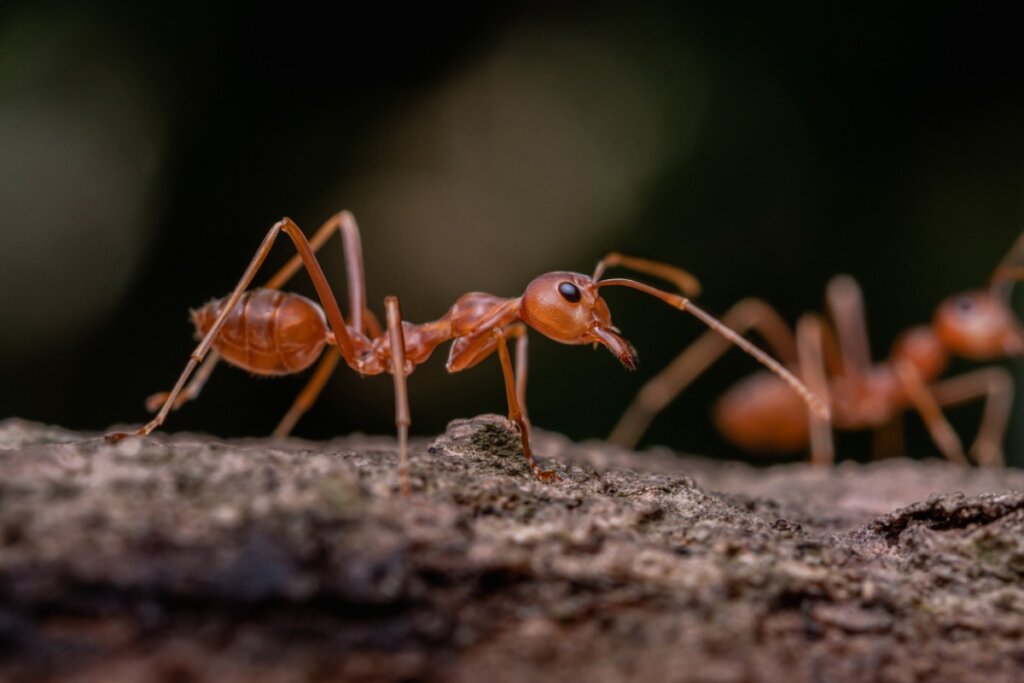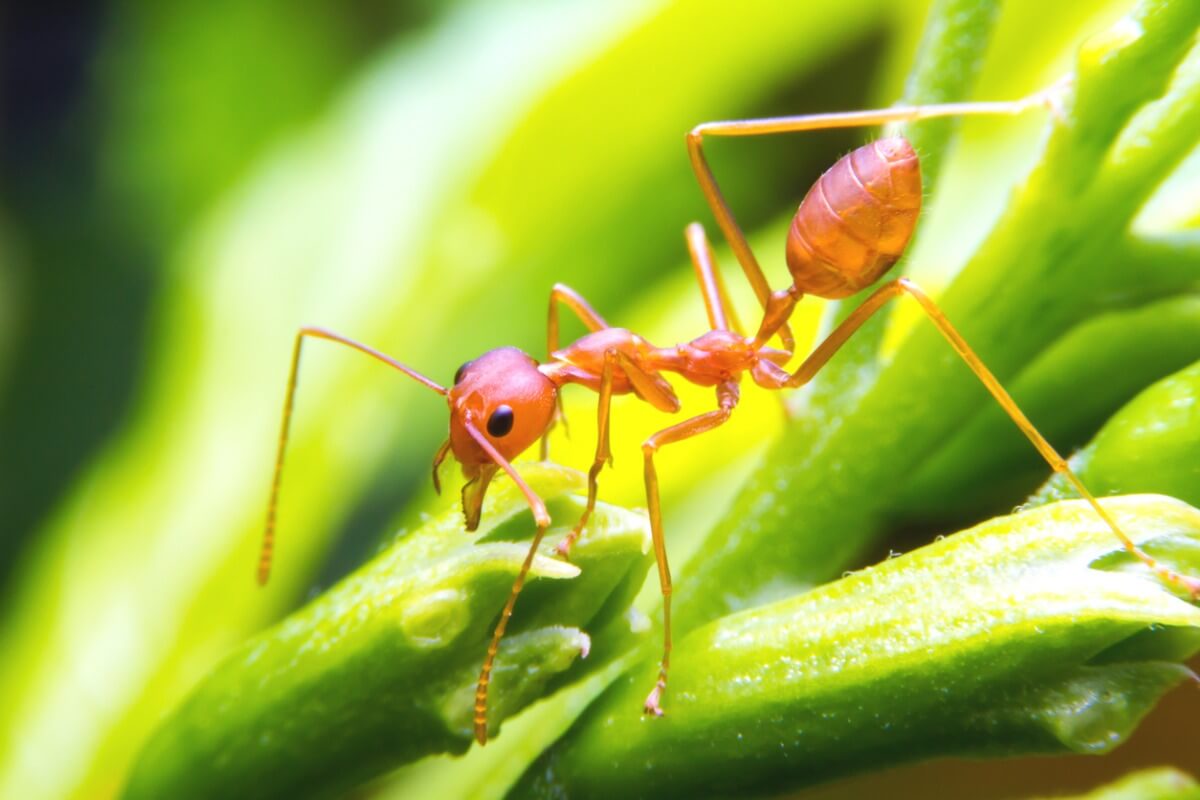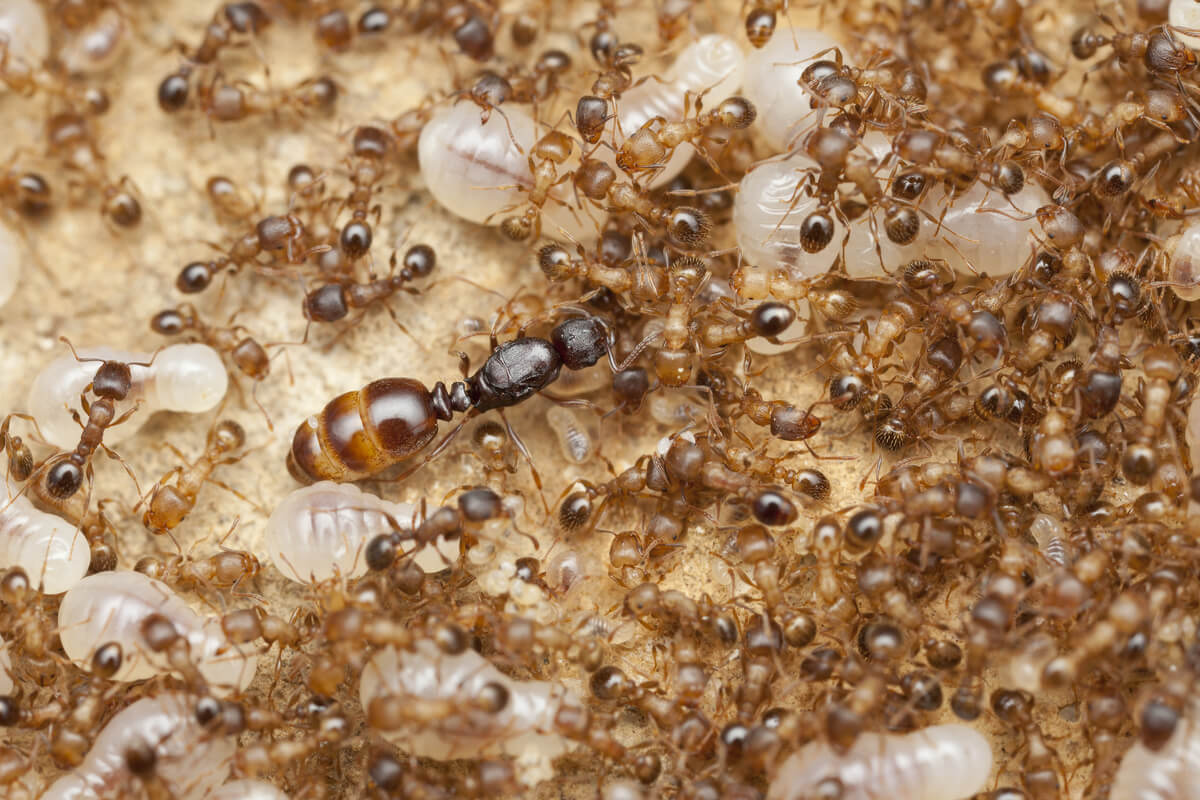Do Ants Sleep?

Surely you’ve seen thousands of ants in your life and we’re also sure that they were all moving fast and working tirelessly. These industrious little insects are found in almost every part of the world. They’re social creatures, and divide their tasks according to the rank they have within the colony. So, here’s an interesting question for you: do you think that ants sleep?! Find out in today’s article!
The work of the queens consists of laying eggs, and the males mate with them. The other non-reproductive female ants (workers) perform many functions: feeding the larvae, removing unwanted debris from the colony, foraging, and providing defense, among many other things.
It’s well known that ants can lift 10 to 50 times their weight, and much has been studied about their social skills and their tireless way of working. Anyway, without further ado, let’s find out how much rest these amazing invertebrates get.
Characteristics of ants
Ants are found on every continent on Earth (except Antarctica). Experts say that some islands like Greenland don’t have any native ants, but other species have been brought there by humans. Moreover, this family of insects (Formicidae), like wasps and bees, belongs to the order of Hymenoptera.
It’s estimated that these Hymenoptera make up 15 to 25% of the biomass of terrestrial animals, as there are between 1000 billion and 10,000 billion ants on Earth. This group is very successful, as there are about 14,000 described species and it’s estimated that there may be more than 22.000 in total. They’re successful thanks to their use of the environment, their social organization, and their ability to defend themselves.

Their hard work
Ants create highly organized colonies or anthills of all possible shapes and sizes. Some species live in systems of only a few individuals, but an average colony may contain thousands of live workers working together.
The smallest colonies live in crevices or natural openings, but the largest create nests and supercolonies have more than 300 million individuals. The latter massive groupings have been identified in Japan, Australia, the United States, and southern Europe.
Colonies are usually made up of sterile wingless females called workers and soldiers, a few fertile males and one or more fertilized females called queens. Anthills with only one queen are known as monogynous, while those with more than one queen (which is rarer) are polygynous.
Ants act as a group entity in their nests, so they are conceived as superorganisms. This insect society is known for its division of labor, good communication between individuals, and the ability to solve complex problems. In other words: the anthill is much more than the sum of its parts.
Do ants sleep?
A study reported by the BBC relied on fire ants (genus Solenopsis) to answer this question. These individuals are also known as red ants and represent a taxon of stinging ants with more than 280 species in the world.
Thanks to the results it was found out that ants do sleep, but the time of sleep depends on the social rank they occupy. The queens, for example, live wonderfully! They have long, deep sleeps and feed for an average of 9 hours every day.
Workers, on the other hand, sleep half as long as queens and take hundreds of short naps. This difference in the way they rest explains why queens live many years (up to 10, or even more) and workers only live a few months.
With this strategy, the colony ensures that there are always enough worker ants awake at any given time. Thus, they create greater protection and service to the joint society.
Worker ant sleep
Because fire ants generally live underground, their sleep patterns aren’t determined by circadian rhythms. Thus, workers rest at irregular intervals and not all at the same time.
The sheer number of short naps these invertebrates take is astounding. On average, a single worker ant takes 250 naps a day, but each nap lasts just over a minute. This equates to 4 hours and 48 minutes of sleep per day.
This means that 80% of the anthill population is awake and active at any given time. A colony is never unattended, as there are always workers available when the need arises.
Queen ants dream!
The contrast between the sleeping habits of the workers and the queens they serve is also striking. Queens sleep at much more regular intervals and even synchronize their naps with each other, for in polygynous colonies they even rest on top of each other and when they are awake they separate.
On average, each queen sleeps 90 times a day for just over 6 minutes. This equates to more than 9 hours of sleep every 24 hours. We can go further, as it’s worth noting that queens rest in two different ways: with antennae partially erect and their mouths open, or with their antennae bent and their mouths closed.
The latter form indicates a much deeper sleep in which queens are thought to actually dream, as they often move their folded antennae when they sleep deeply. This action may be similar to rapid eye movement in vertebrates.
The function of sleep is still unknown, but the little rest in the workers ensures that the queens live peacefully. Thus, their job is to protect the queen and her royal offspring from exposure, starvation, and predators.
The workers, by engaging in the high-risk work, guarantee the queens a long life. Surprisingly, as we mentioned before, queens can live for about 6 years without any difficulty (although in some species they live up to 45 years). However, the workers’ lifespan is only 6 months to a year and they die of old age or from some accident while foraging for food.

So, now you know that ants do sleep, and, not only that, that their sleep and rest depend on the functions they perform. The workers are the ones that rest the least, as they have to keep the colony afloat at all times.
All cited sources were thoroughly reviewed by our team to ensure their quality, reliability, currency, and validity. The bibliography of this article was considered reliable and of academic or scientific accuracy.
- Colaboradores de Wikipedia. (2021, 30 septiembre). Formicidae. Wikipedia, la enciclopedia libre. https://es.wikipedia.org/wiki/Formicidae
- Pest World. (s. f.). 8 Interesting Facts about Ants That You Need to Read. Recuperado 30 de septiembre de 2021, de https://www.pestworld.org/news-hub/pest-articles/8-interesting-facts-about-ants/
- Walker, M. (2009, 17 junio). BBC – Earth News – The secrets of ant sleep revealed. BBC. http://news.bbc.co.uk/earth/hi/earth_news/newsid_8100000/8100876.stm
